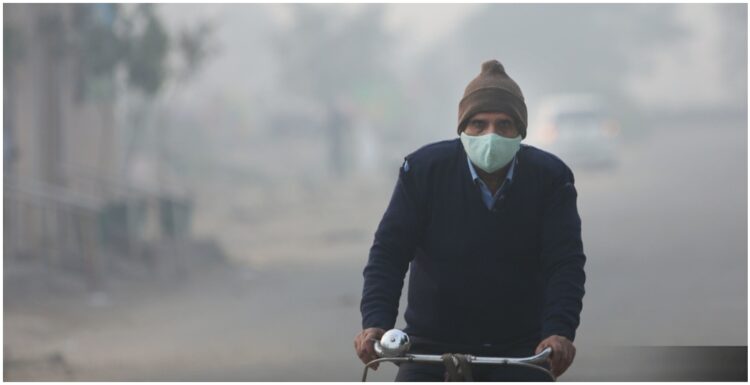Patna: As winter intensifies in Bihar, air pollution across the state is worsening. The latest report from the State Pollution Control Board indicates a significant rise in the Air Quality Index (AQI) in 15 major cities. Cold winds are causing smoke and dust particles to settle lower in the atmosphere instead of dispersing, rendering the air unhealthy in many areas. Experts caution that individuals with respiratory issues, the elderly, and children are particularly vulnerable if conditions continue to decline. The situation in the capital, Patna, is particularly concerning. The AQI at Gandhi Maidan was recorded at 160 on Sunday, making it the most polluted area in the city.
Other significant locations such as Danapur (136), the area near the Planetarium (132), and Rajvanshi Nagar (123) also fall into the “moderately polluted” category. Only Patna City reported a “satisfactory” AQI of 100. To combat rising dust on main roads, the Patna Municipal Corporation has begun sprinkling water in various areas to diminish airborne particles, although the effects are anticipated to take time. Outside Patna, many cities are also seeing a decline in air quality. Hajipur has become the most affected area in the state, recording pollution levels higher than any other district. Meanwhile, Katihar (96), Motihari (84), Saharsa (83), Bettiah (90), and Bhagalpur (94) are currently in the “satisfactory” range but are trending towards hazardous levels as pollution rises.
Residents are already experiencing breathing difficulties, particularly in the early mornings and late evenings when temperatures are at their lowest. The weather is projected to exacerbate the situation before it improves. The India Meteorological Department has noted a temperature drop of 2–4°C across many districts in Bihar. With slowing wind speeds in winter, dust and pollutants are trapped near the ground. Additionally, fog and limited sunlight hinder air clearance. Meteorologists indicate that winter typically brings the worst air quality of the year, while monsoon is the cleanest period. Currently, dry and foggy weather is expected to persist for the next six to seven days, leaving little hope for immediate air quality improvement.
